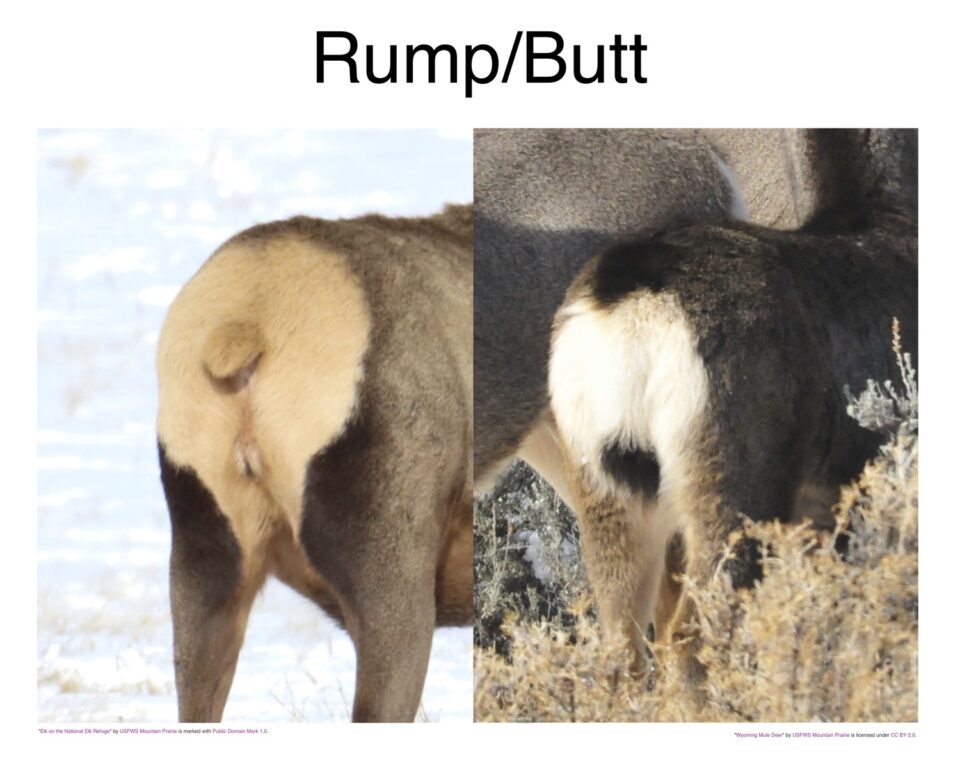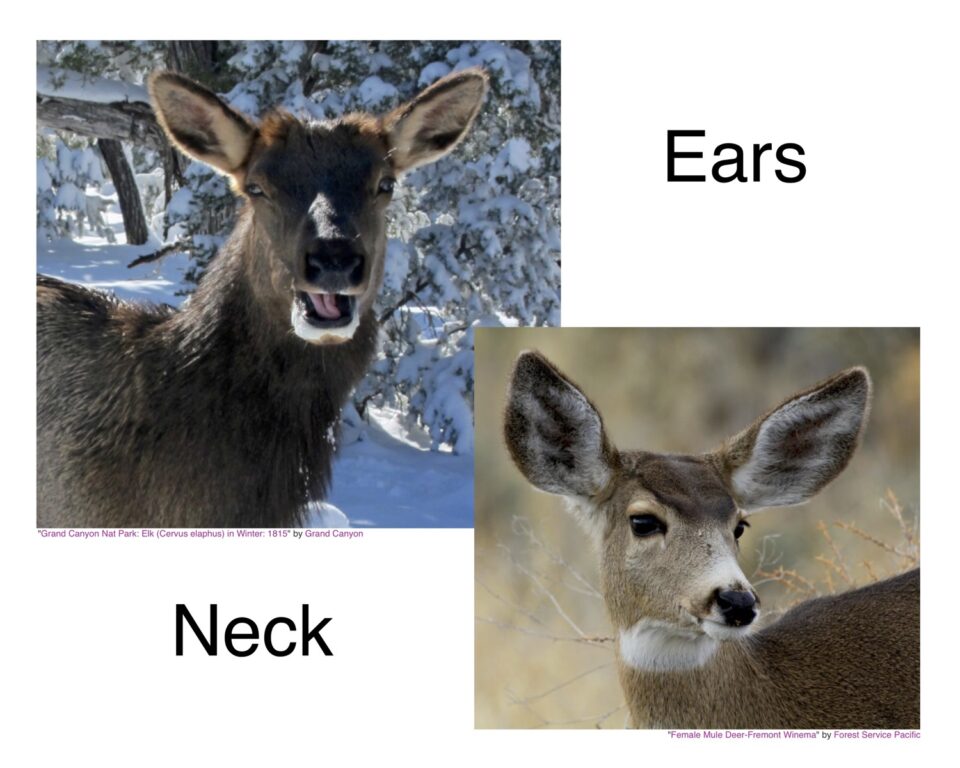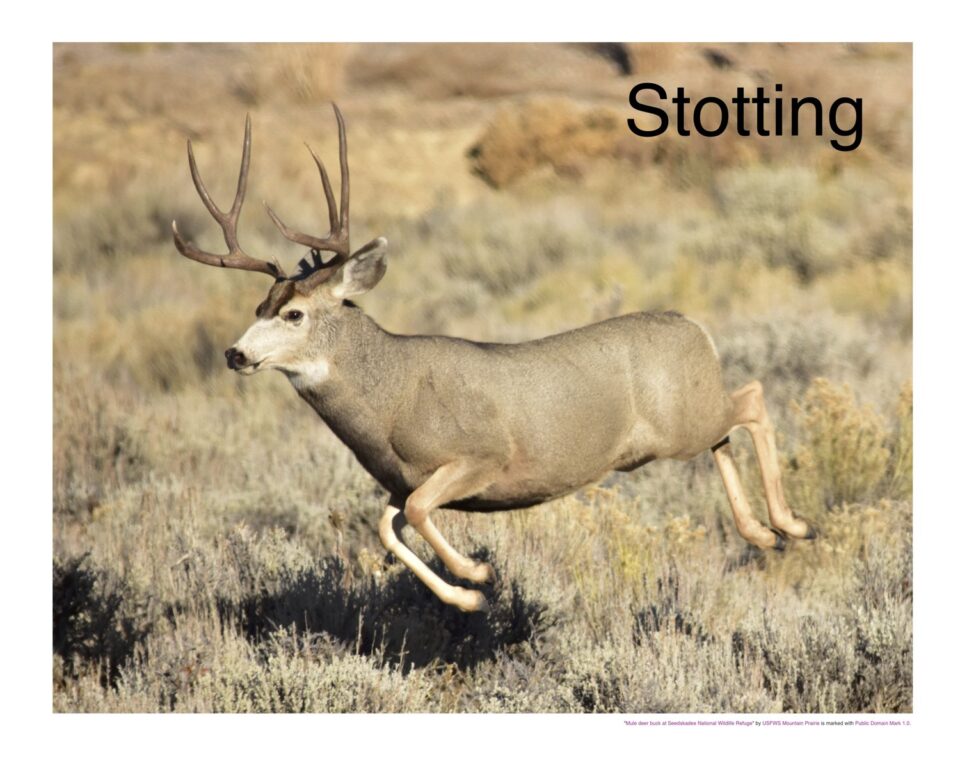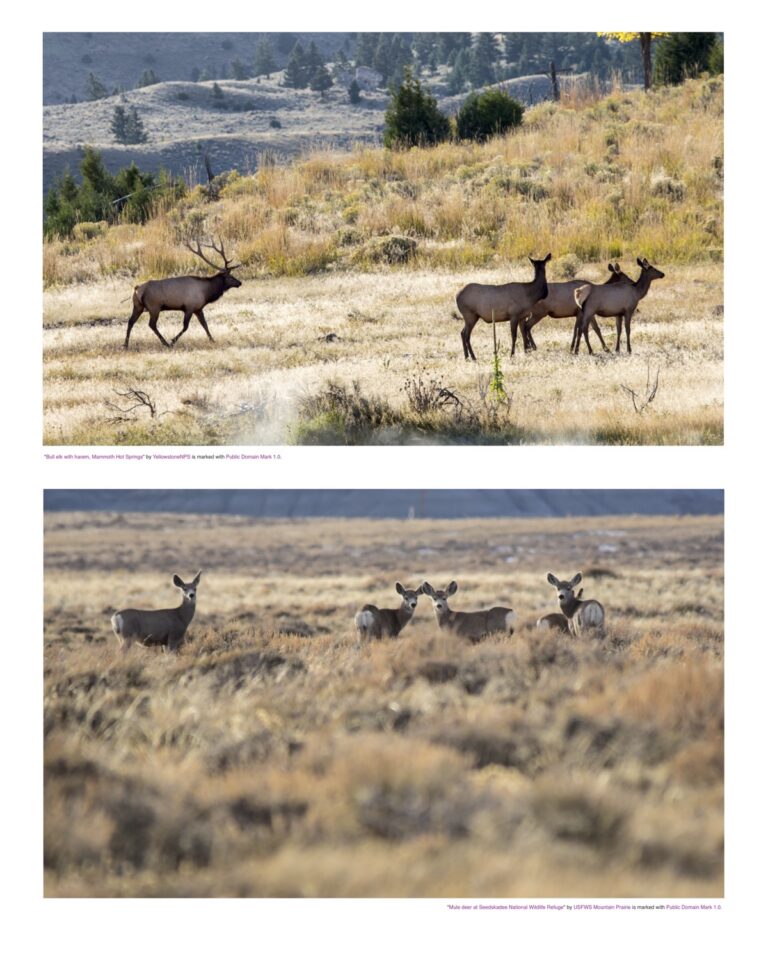Have you ever spotted a wild ungulate (a hoofed animal) up on a hillside or in the trees and found yourself wondering “Is that a deer? Or an elk?” You’re not alone! Here in the Sawtooth National Recreation Area, elk and mule deer are two of our more familiar ungulates and at a distance, they can look surprisingly similar!
My patio talk this summer was on this topic and I thought it could be useful to share here what I teach my audience members about, in case you missed it in person. (It also means you get a free pass on dressing up, as I usually have two members of the audience put on cardboard cut out ears and rumps to demonstrate the differences!)
I like to start my talk by asking what features you might use to tell the two big brown herbivores (plant-eaters) apart. The answers are usually size, color, and antlers. All good answers, but not enough clarity. Both male mule deer and elk can have antlers, both species are shades of brown and color can vary depending on season, and size (elk are taller and larger when full grown) is more useful when they are standing near each other, which isn’t often the case when we are wondering which is which out on the trail.
Before we jump in, it’s worth noting that there are four kinds of wild ungulates in the SNRA: elk, mule deer, pronghorn, and white-tailed deer. White-tails are less common at higher elevations, so you’ll mostly see elk and mule deer up here. Pronghorn are easy to identify as they’re smaller, bright golden-cream in color, and usually out in open sagebrush flats. If you do a double take on whether what you see is a bright rock or an animal, it’s probably a pronghorn!
Now, let’s get into the five ways I use to tell elk and mule deer apart when viewing them alone or at a bit of a distance.
The rump (rear end) is often what catches your eye first on a hillside. Their brown coats blend in with the background, but if they’re facing away from you, their rumps usually stand out.
If you can see the tail, it’s one of the easiest giveaways!

Left: Elk with their short puffy tails and cream colored rumps. Right: Mule deer with their white rumps and longer thin tail with a black tip (*note this photo is from winter and the mule deer rump is shaggier than in summer).
Necks can help distinguish the two, especially when viewed from the side.
While both species have big ears, if you catch yourself noticing the ears first, before anything else, there’s a good chance it’s a mule deer!

Left: Elk with their brown hairy neck and relatively smaller ears. Right: Mule deer with their white throat patch and larger ears.
Even how they move sets them apart.

Mule deer “stotting” – moving with all four feet of the ground in a bounce like a pogo stick.
Next time you see one of these two animals, take a closer look at those rumps, tails, necks, ears, and movements. With practice, you’ll be able to identify elk and mule deer in just a few seconds, and whether you can or can’t tell the difference, seeing one of these beautiful creatures in the wild is always a fun experience!

Can you tell which is which?
Alicia Lindbom is the 2024 & 2025 Summer Programs Coordinator for SIHA. When she’s not managing staff and logistics, you can find her hiking with her husband or making art.